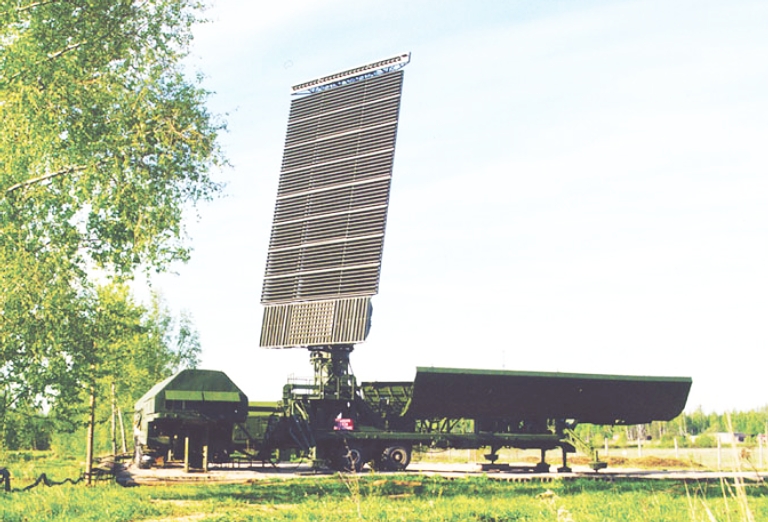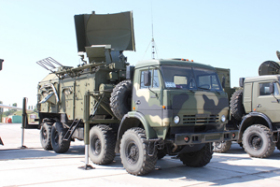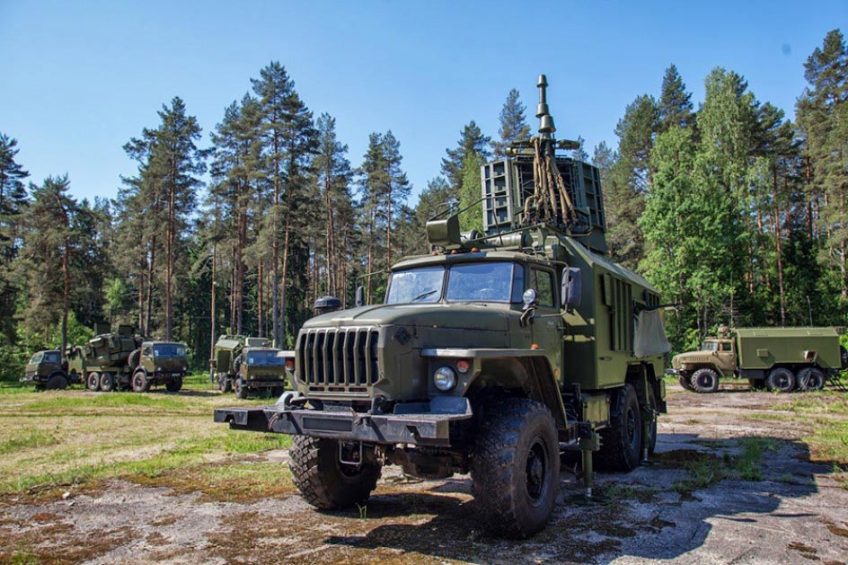Russian anti stealth radars. Moscow is more often than not publicly dismissive of stealth technology. In Russia, American stealth aircraft are often presented in the press as a gimmick. Last week’s statement from a Russian military spokesman saying “The F-35 is only invisible to American taxpayers and foreign buyers” seems to confirm the trend. And when Sukhoi undertook the challenge of building a 5th generation platform, manoeuvrability and range came before stealth on its list of priorities… The Su-57 has some low observable features, but “stealthy”, it is not.
Yet, at the same time, Russia has been developing a multitude of anti-stealth radars and sensors. So, in private at least, they seem to actually pay attention to low observable planes and drones… The obvious question to ask, here is this: Do they dismiss Stealth technology in public for pure bravado sake (and worry about it in private) or do they dismiss it because they have developed the necessary technology to detect said stealth aircraft? Sadly enough, we do not have the answer to that question. What we can do, though, is talk you through some of the anti stealth systems they have fielded. This is not an exhaustive list, but it should give you an idea of the path chosen by Moscow in order to counter the stealth threat.
P-18-2
The P-18-2 is a 2D VHF radar. It is a modernisation of the Soviet P-18 Terek early-warning radar that was introduced in 1970!. It integrates a digital signal processing module to improve resolution and resistance to jamming. It was supplanted by the more modern and capable Nebo family of radars but is still used and modernised as it has been manufactured and exported in large numbers during the Cold War. It has a range of 250km.

Nebo-SVU
The Nebo-SVU is a 2D AESA surveillance radar using the VHF waveband.. It is designed to detect, locate, identify and track flying objects, including low radar signature ones. It can also detect and locate active jammers. The Nebo has a maximum detection range of 360km for fighter sized targets. The detection range for stealth aircraft is lower than that. It can simultaneously track 100 objects within a range of 140km. It can be integrated into a S-400 battery, improving the battery’s situational awareness.

59N6E Protivnik-GE
The Protivnik-GE is a 3D decimetric surveillance radar. It can automatically detect, position, track, identify (friend or foe) and classify flying objects. It is used to provide data to friendly aircraft, air controllers and AA batteries. It has a range of 400km and can track objects in lower orbit. It can optionally be synchronised to a S-400 battery, providing operators with an increased situational awareness and enabling easy networking between several batteries. The Protivnik-GE operates in UHF.

Gamma-DE
The Gamma-DE is an early warning surveillance radar. It has been designed to work as a stealth detection trip wire for complex AA networks: It operates in UHF, can be installed 15km away from the Command & Control vehicle (usually situated at the center of an air defence network). Its maximum range for stealth aircraft detection is 240km. Its maximum range is 400km.

Resonance-NE
The Resonance-NE is a phased array anti stealth early warning VHF radar operating in the metric wavelength band. It is semi mobile (It takes 24 hours to deploy and has a high power consumption). It is an Over-The-Horizon system with a range of up to 1,100km. It does not feature any moving parts when functioning, meaning that it can remain in operation on location for months at a time with little maintenance necessary. It can track up to 500 objects simultaneously and can therefore be used to control and coordinate complex air operations or an air defence network. The Resonance-NE pays for its ability to see far and detect stealth aircraft by not being very accurate: It has an accuracy of 300 meters and 1.5 degrees for both elevation and azimuth. Good enough to vector in fighter jets or transmit its data to nearby AA batteries. Algeria purchased one of those in 2017. Interestingly, Iran bought one as far back as 2009…

Struna-1 Barrier
Barrier is a bi-static low altitude early warning radar. It is optimised for detection of low observable objects, including stealth aircraft, cruise missiles, balloons and parachutes.
A bi-static radar see its transmitter and receiver placed in different locations. This, in turn, helps the radar system detect objects a conventional radar would otherwise not see. It can be deployed near urban centres as it has a low radiation output. Each Barrier module has a range of up to 400km. The transmitter and receiver are typically 10 km apart. Several such pairs can be placed 50km away from one another, creating a chain. Such installations would be usually deployed along a border, across an estuary or a mountain pass or around a large industrial center or city. Rumours has it a Struna-1 complex has been deployed outside of Moscow.

Moscow-1
Moscow-1 is a passive radar with a range of 400km. It passively scans the airspace for radio emissions, tracks and identifies any objects emitting any kind of electronic noise and transmits the data to the air defence network command vehicle. It is currently one of the best Electronic Warfare platform in operation within the Russian armed forces. It is also compatible with the S-400 battery.

1L222 Avtobaza
The 1L222 Avtobaza is an intelligence gathering platform designed to detect and locate side looking airborne radars, air-to-ground fire-control radars and low-altitude flight control radars. The Artobaza identifies radars by analysing carrier frequency, duration and pulse repetition frequency. The data collected can help detect and identify incoming planes. Said data can be sent to an automated jammer or to the fire control system of an air defence platforms

To sum it up, while Moscow publicly dismisses stealth technology, behind the scene, it works quite intensively in developing and producing platforms capable of detecting and countering low observable objects. To do so, the Russians follow two paths:
The first one is UHV/VHF band radars. Those radars can detect stealth objects but have poor accuracy (between 100 and 300 meters depending on the platform). They are nevertheless a very useful addition to any air defence network, acting as an early warning system / trip wire and providing the AA batteries with additional data on inbound objects.
The second one is based on ELINT / EW platforms. If you can’t detect an aircraft, try to detect its onboard systems and electronic emissions / noise.
The interesting part is that a fair few of those platforms are compatible with the S-400 battery, either through direct plug and play or through additional command post vehicles. And the S-400 can be networked to other batteries such as the S-200D, S-300PMU-1 / S-300PMU-2, Tor-M1 and PantsirS1/S2. Again, some of those can be directly plugged into a S-400 network while others necessitate additional command vehicles to do so. Additionally, the S-400 can also automatically receive data from the A-50AWACS.
Simply put, the Russians stake lot of their anti-air defence needs onto the S-400, which has now become a modular platform. Said battery can be equipped with various types of missiles occupying the whole spectrum from long to medium to short range. The S-400 can also be supplied with various radars, all fulfilling a need, filling a gap or niche. It can also be supplemented with additional batteries, covering the medium and short range capability.

All of those are pieces of a very complex A2AD puzzle. Such an anti-access area denial bubble would be a tough nut to crack and doing so would require considerable resources and an overwhelming saturation attack to disable. Keep in mind ELINT platforms such as the Moscow-1 are completely passive and therefore extremely difficult to detect. Meanwhile, UHF and VHF radars are more resistant to jamming and some of those actually operate below the frequency coverage of many current ARM missiles, meaning they’d be difficult to suppress that way.










